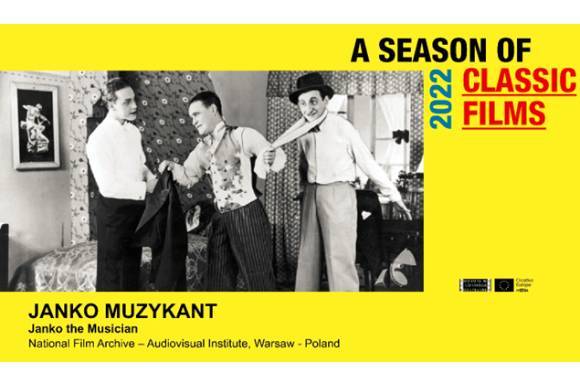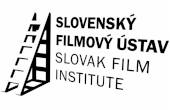A Season of Classics Films
The initiative by the Association des Cinémathèques Européennes, coordinated with the support of the EU's Creative Europe MEDIA programme, is presenting a series of free film screenings and parallel activities across Europe to attract audiences to our shared cinematic cultural heritage. The programme aims to raise awareness of the work of European film archives, to connect the public to the history of cinema and the importance of film preservation. Most of the films are premiere digital restorations. Some screenings include live performances and interactive educational sessions. All films are available with English subtitles. Additionally, French or other subtitles may be available in some cases.
Janko the Musician, dir. Ryszard Ordyński, Poland, 1930, 70 min
One of the oldest surviving Polish sound films, Janko the Musician, until recently was known in an incomplete version devoid of sound. Considered lost, the original soundtrack discs were found in a private collection abroad and bought by FINA in 2018. The film has been digitally remastered and restored. Nearly 90 years after its release, it will be presented again in its original form.
The film score for Janko the Musician was created by eminent conductor and composer Grzegorz Fitelberg, and the well-known theatre scholar, director and composer Leon Schiller. The film is, therefore, unique and hitherto unknown addition to the artistic output of these two figures so important for Polish music and theatre.
Janko the Musician is an example of an early European sound film. In this respect, it is a very modern production compared to other European movies from that year. Although there is no dialogue, the score is exceptionally rich compared to its contemporaries.
The film is also a curious example of an adaptation of literary classics. The screenplay is based on a well-known novella by Henryk Sienkiewicz, which is still a required reading in Polish schools. Although the plot is quite different from the original (the film tells the further story of the protagonist who, in the novella, dies as a child), it is an interesting example of the creative approach the scriptwriters chose in this crucial period of world cinema.
The film is also brimming with local curiosities: the initial scenes in the countryside were shot in Rybienko and Barcice near Wyszków - these are probably the oldest film stills of the local monuments: the Skarżyński palace and the wooden Baroque church. One of the outdoor scenes was shot on the legendary, (now defunct) marketplace on Kercelego Square in Warsaw, the so-called Kercelak. It was one of the places most characteristic of the folklore of Warsaw at the turn of the 20th century.
The main roles are played by the debuting actor Witold Conti, who soon became an idol of Polish cinema and stage, and Maria Malicka, an acclaimed dramatic actress of the younger generation. The supporting roles feature two of the most popular comedians of the interwar Polish revue: Adolf Dymsza and Kazimierz Krukowski, as well as the future most famous film heart-throb, Aleksander Żabczyński.
__________________________________________________________________________________
Further details of the screening:




















